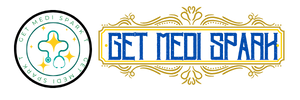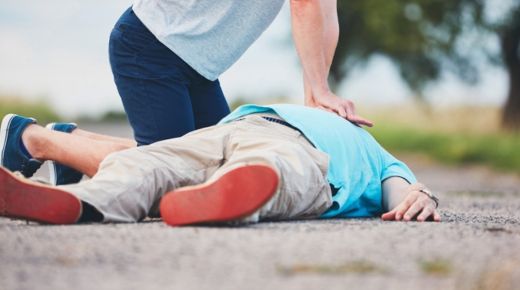How to provide first aid to stroke patients?
A stroke is a serious medical emergency. The faster treatment starts, the better the chances of limiting further damage. Every second matters.
A stroke happens when a blood vessel that supplies oxygen and nutrients to the brain is blocked by a clot or bursts. This cuts off oxygen supply to part of the brain, causing the affected brain cells to die.
Women face a higher risk of stroke over their lifetime than men. While many stroke symptoms are the same for both, some are more common in women.
What are the signs of stroke?
Stroke can cause certain visible symptoms that can include:
- Imbalance
- Weakness in the arm or leg
- Droopy face
- Vision issues
- Difficult in speaking like slurred speech
- Severe headaches
Reach out to the stroke specialist in Coimbatore if you notice any of these symptoms.
What are the types of strokes in brain?
Essentially there are four types of strokes in brain they include:
Ischemic stroke:
This cuts off blood flow to that part of the brain, which can damage or destroy brain tissue.
Transient ischemic stroke (mini-stroke):
In this case, the symptoms are similar to those of a stroke but only last for a short time. It is a warning sign that a more serious stroke could happen in the future.
Hemorrhagic stroke:
This can put pressure on the brain and harm or kill brain tissue.
Brain stem stroke:
This can lead to various symptoms, such as trouble breathing, swallowing, and speaking along with problems with coordination or balance.
What are the causes of stroke?
There are several causes that might lead to stroke that include:
- High cholesterol
- Obesity
- Smoking
- High blood pressure
- Less physical activity
- Alcohol consumption
- Heart diseases
- Diabetes
Why is stroke affected on one side of the body?
One half of the brain controls one side of the body, and the other half controls the opposite side. When blood flow to the brain is disrupted, it usually affects just one side, impacting both the brain and the corresponding side of the body. Additionally, the area responsible for language is often located in the left side of the brain, near the region that controls movement for the right side of the body. As a result, it’s common for strokes to cause problems with the right hand and speech.
How is the first aid for stroke provided?
Here is the step by step first aid process for stroke patients, that include:
Act FAST:
This acronym helps you recognize stroke symptoms like facial drooping, arm weakness, or speech problems. It also reminds you to note when the symptoms start, as quick treatment is crucial.
Reach out for medical help:
Make an emergency service call right away if you believe someone is having a stroke. Every minute matters, so don’t wait to see if the symptoms will pass.
Stay with the person until help arrives:
While waiting for emergency services, stay with the person and keep them calm. Help them stay comfortable until help arrives.
Provide reassurance and comfort:
A stroke can be scary for both the person going through it and those around them. Offering comfort and reassurance can help keep them calm and lower stress. You can also assist with simple tasks, like getting them water.
How long can a stroke last for?
The length of a stroke depends on its type and severity. Ischemic strokes, caused by blood clots, can last from a few minutes to several hours, while hemorrhagic strokes, caused by bleeding in the brain, can last much longer.
What are the treatment options for stroke?
If someone has a stroke, the treatment will depend on its type, severity, and where it occurs in the brain. Here are some treatments that can aid in brain stroke recovery.
Medications:
Medications are used to treat both ischemic and hemorrhagic strokes. These are a few of the most widely utilized ones.
Medical procedures:
Several medical procedures can help prevent and treat strokes. These include the following.
Carotid endarterectomy:
This surgical procedure removes plaque buildup in the carotid artery, which can help prevent a stroke.
Mechanical thrombectomy:
This procedure involves using a device to remove a blood clot from the artery.
Angioplasty and stents:
This procedure involves putting a catheter into the artery that supplies blood to the brain and inflating a balloon to widen the narrowed area. After that, a stent is inserted to maintain the artery’s opening.
Rehabilitation:
Long-term physical and cognitive impairments can result from a stroke. Rehabilitation is crucial for recovery, and the following therapies are commonly used.
Speech therapy:
It assists with communication and language issues caused by a stroke, as well as problems with swallowing.
Physical therapy:
It helps regain strength, balance, coordination, and mobility.
Occupational therapy:
It aids in relearning everyday activities and helps improve fine motor skills.
Can you lead a normal life after getting affected by a stroke?
Focusing on rehabilitation and recovery is essential for improving quality of life after a stroke. This may include physical and occupational therapy, speech therapy, and help from caregivers or support groups. With continued treatment and support, many people can adjust to their new situation and lead fulfilling lives after a stroke.
Important Takeaway:
Quick emergency medical care can lower the risk of disability after a stroke. Once you call emergency services, make sure the person is in a safe position and provide first aid if necessary until help arrives. Receiving prompt treatment can give healthcare professionals more options for addressing the stroke. Reach out to the best neurology hospital in Coimbatore if you are looking for advanced rehabilitation options for stroke.

